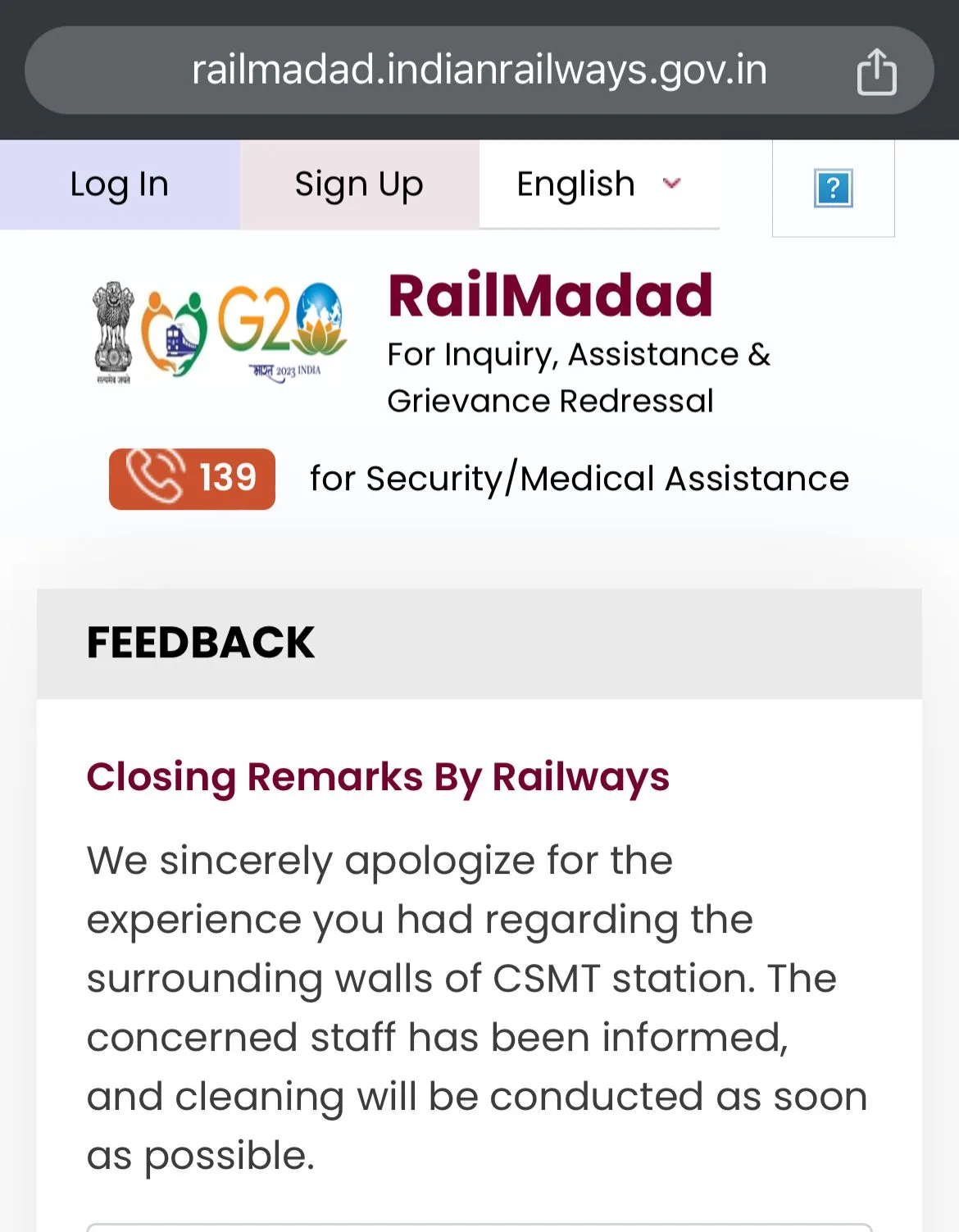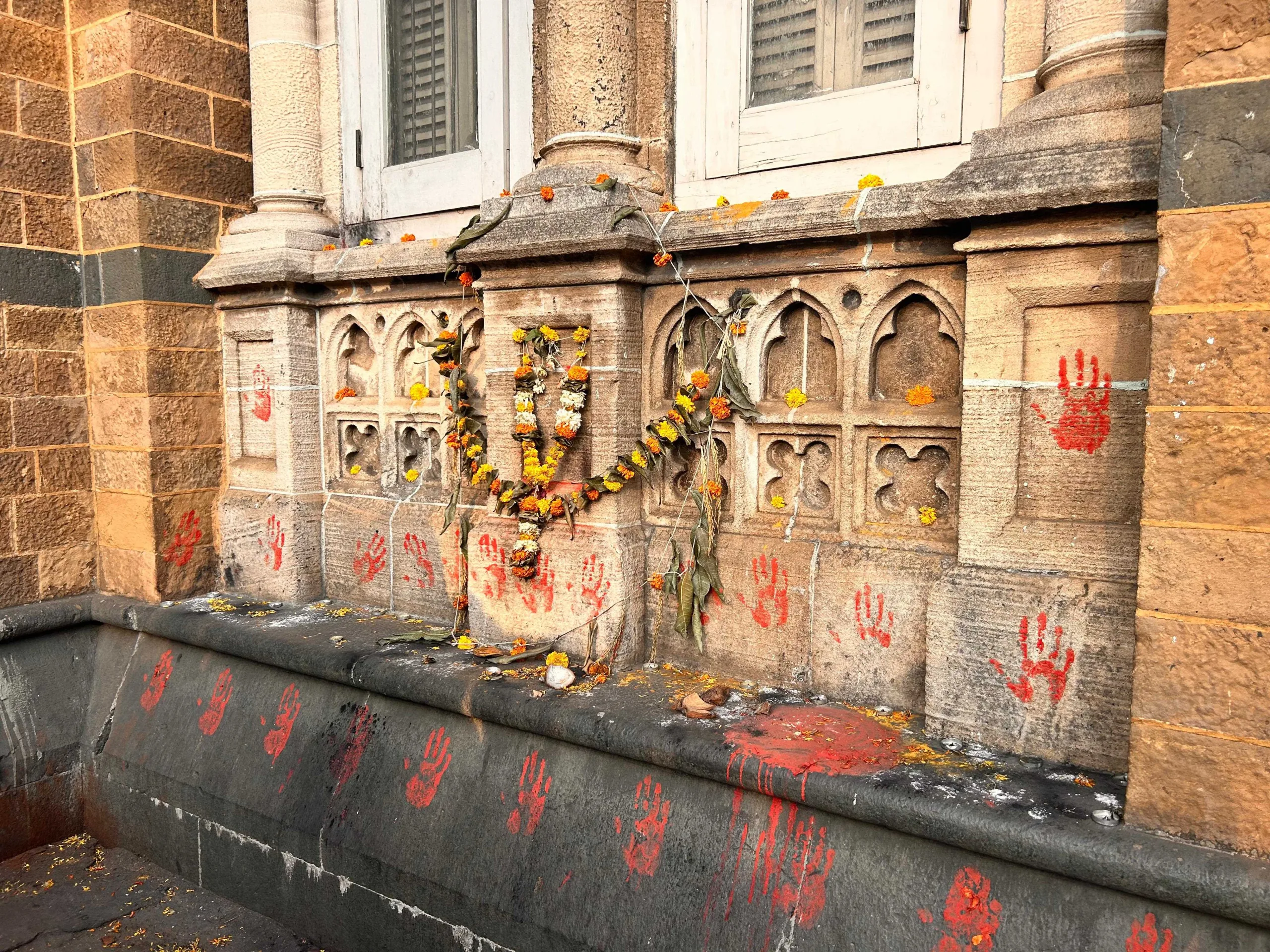**** This article is a collaboration between IHP and Sthāpatya Samvad. We wanted to draw attention to the recent case of vandalism at a WHS in Mumbai.****
A serious act of vandalism recently occurred at the Chhatrapati Shivaji Maharaj Terminus (CSMT) in Mumbai, one of India’s UNESCO World Heritage Sites. This incident raises concerns about the effectiveness of security protocols implemented for protecting heritage monuments, particularly at such a high-profile, culturally significant location.
On Sunday, November 03, as the city celebrated the joyous festival of Diwali, Sandesh Awadan, founder of Sthāpatya Samvaad, came across the horrifying sight at CSMT station. The outer walls of the UNESCO World Heritage Site (WHS) had been a part of some veneration ritual. It is unclear when this act of vandalism took place and whether it is performed regularly. However, this discovery raises critical concerns for citizens and heritage professionals alike.
Sandesh points out, “Such an act of defacement would have required a considerable amount of time, likely 20-30 minutes, during which multiple individuals were repeatedly damaging a recognised heritage monument. This raises a critical question: was this vandalism carried out under the observation of security personnel or were those tasked with safeguarding the station entirely unaware? How could such an incident occur unnoticed for an extended period, especially at a site of such historical and cultural significance?”
Built in the 1880s CSMT station previously known as Victorian Terminus, is the most important Neo-Gothic monument of India. UNESCO’s report of the 28th Session of the World Heritage Committee mentions, “The three best buildings designed and constructed by the British in India are the Rashtrapati Bhavan or Viceroy’s Residence in New Delhi, the Victoria Memorial in Calcutta and the Victoria Terminus Station, now known as the Chhatrapati Shivaji Terminus, CST, in Mumbai. The CST is the finest among these examples.”
Dr Christopher London, architectural Historian and an expert on Victorian Architecture in Mumbai notes, “… CST is to the British Empire what Taj was to the Mughal Empire.”
UNESCO cites the splendour of CST as a heritage universal value, “It is one of the most splendid examples of Gothic Revival architecture in the world.”
As a responsible citizen and an active heritage advocate, Sandesh filed a complaint with the Railway authorities. Furthermore, he has filed an RTI, seeking to find out the security of the station and financial aid received by the CST station. In response to a complaint, railway authorities stated, “We sincerely apologise for the experience you had regarding the surrounding walls of CSMT station. The concerned staff has been informed, and cleaning will be conducted as soon as possible.”
Sandesh is determined to get to the bottom of this serious vandalism at UNESCO WHS. As a long-time user and admirer of the grandeur, history and significance of the living monument, he said, “The people responsible for this must be punished asap to send a strong message that no such vandalism of a valuable heritage will be tolerated.” He remains positive and replied to Railway authorities saying, “Let’s hope the cleaning is done in line with conservation standards to preserve the heritage of this UNESCO-listed site.”
This is not the first time CST has been vandalised by miscreants. The Hindu reported on an incident in 2021, wherein someone had spray painted on one of the pillars of the station.
Breach of UNESCO WHS guidelines
UNESCO has implemented comprehensive guidelines to safeguard World Heritage sites from vandalism, which form part of a broader strategy to maintain these sites’ Outstanding Universal Value. Central to this approach is a focus on protective measures, monitoring, community involvement, and legal enforcement.
The acts of vandalism at CSMT are in clear violation of two of the recommended guidelines; Countries are encouraged to implement management systems with legal and regulatory protections, often including buffer zones to minimise outside threats; Monitoring the site and routinely reporting to UNESCO, which helps identify risks early, especially for sites listed as endangered.
Repeated breaching of UNESCO’s protection guidelines may cause the site to be put on the ‘Endangered World Heritage list‘ and eventually lead to loss of funding and the delisting of the heritage site entirely.
Need for heritage advocacy
CSMT station was one of the sites attacked during the 26/11 terror attacks in Mumbai. After the attacks, Mumbai police placed metal detectors, installed advanced surveillance cameras and increased the number of police and security personnel at the station. These measures may prove to be effective in case of a future terror attack and criminal activities but they do not help to maintain the integrity of the WHS.
A part of the duty of security forces at WHS is also the protection and preservation of the monuments. The on-duty police and security personnel need to be more heritage-sensitive. They must be trained to protect and prevent vandalism at WHS and national monuments in the country. After all, vandalism of world heritage sites due lack of security measures is not uncommon in India.
Furthermore, the government needs to encourage and possibly fund local participation in the protection and preservation of heritage sites. If not our monuments will forever face the risk of destruction and WHS remain at constant risk of falling into the Endangered list or being delisted.
